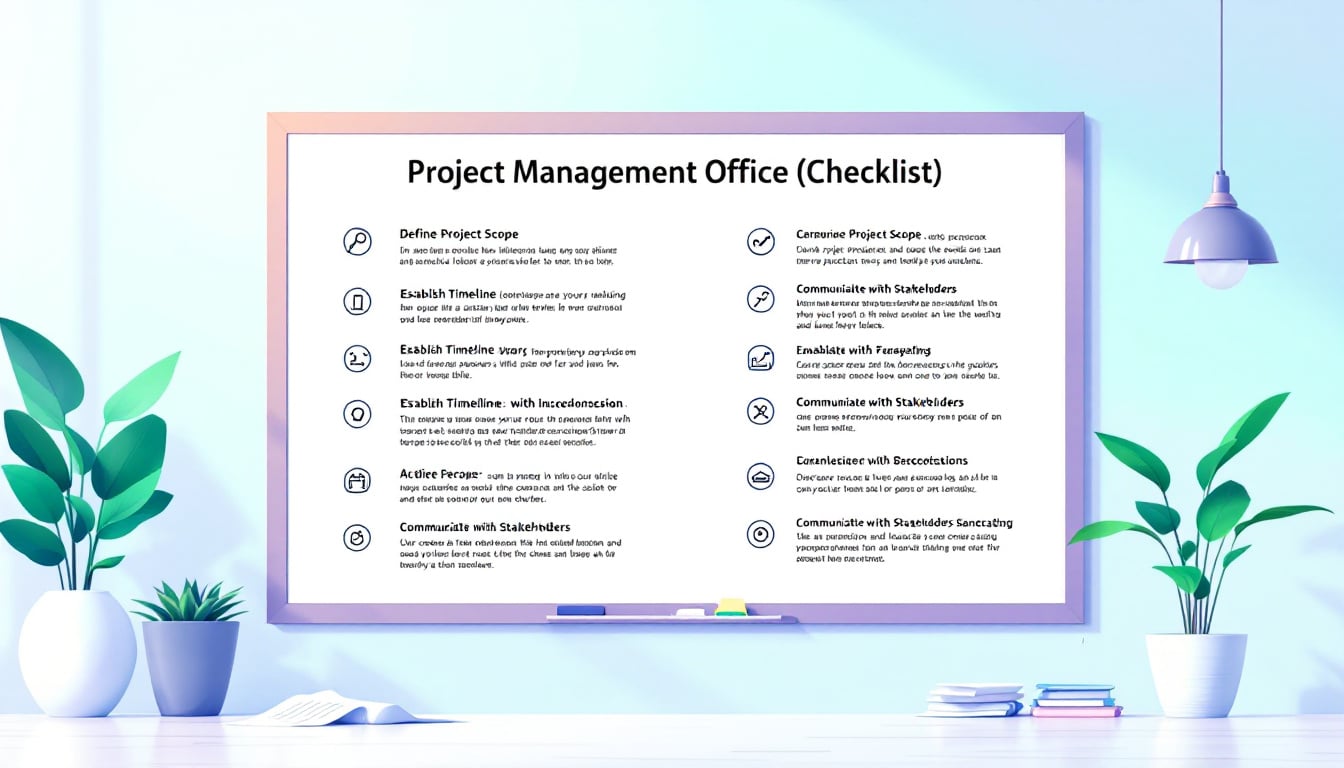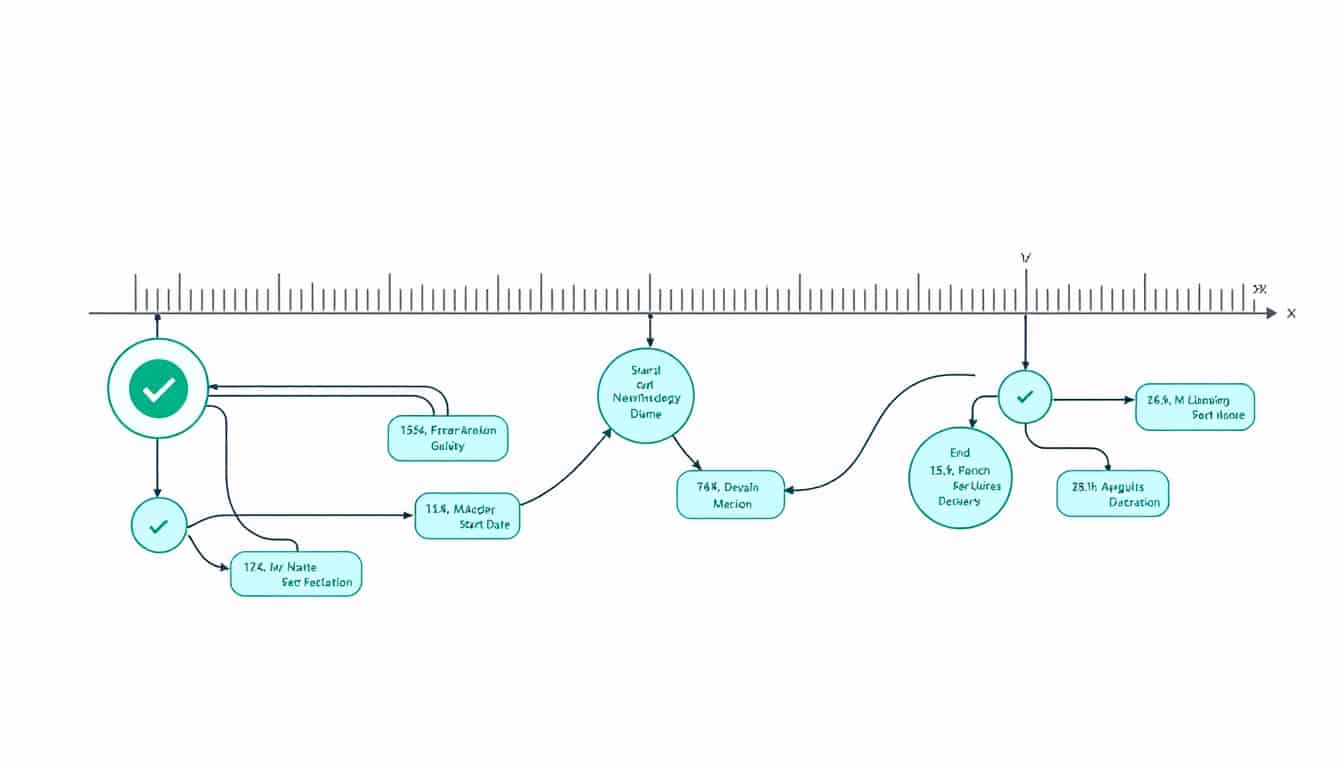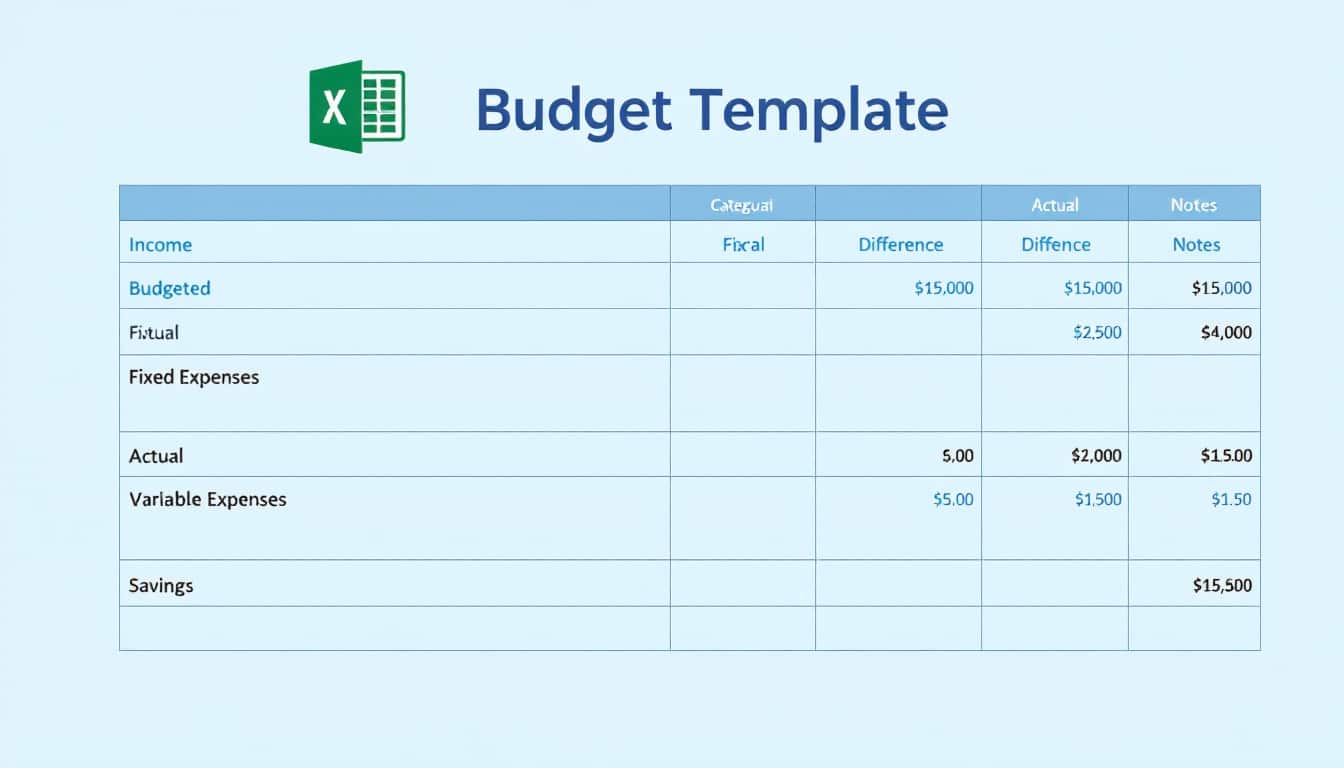Structuring your project management office has never been more crucial. An effective checklist is the key to success. Discover the 12 essential steps to establish a robust PMO.
🔥 Nous recommandons Ideamap
Ideamap est l’outil idéal pour un brainstorming ou un projet collaboratif. Grâce son interface facile et à ses fonctions IA, Ideamap booste votre créativité tout en favorisant une meilleure organisation de vos idées pour atteindre vos objectifs.
Establishing a project management office (PMO) is a complex task that requires careful planning and strong executive support. By following these steps, companies can create an effective structure that optimizes project management and ensures long-term success.
Initial Planning and Executive Support
The first step in creating an effective checklist for a PMO starts with a strategic planning. Establishing a work breakdown structure (WBS) helps break down the project into manageable tasks. Using tools like Trello, Asana, or Microsoft Project facilitates tracking and managing progress. These platforms offer advanced features that help organize tasks, assign responsibilities, and monitor project advancements transparently and effectively.

Gaining executive buy-in is a critical step. Without the support of executives, the PMO risks not having the necessary resources and losing legitimacy within the organization. It is recommended to secure the support of 1 to 2 senior executives to ensure continuity even in case of personnel changes. This dual support strengthens the stability and sustainability of the PMO. Additionally, strong executive support ensures that the PMO initiatives align with the strategic goals of the company.
A concrete example could be that of Company XYZ, which in 2024 succeeded in setting up a PMO by securing the support of its operations director and its financial officer. This support helped clarify the PMO’s objectives and allocate the necessary resources from the outset, thus ensuring a smooth implementation. According to a study by the Project Management Institute, PMOs with strong executive support are 30% more likely to succeed than those without.
Moreover, it is essential to communicate regularly with executives to keep them informed of progress and challenges faced. This ongoing communication builds trust and ensures that the PMO remains aligned with stakeholder expectations. By integrating regular reports and follow-up meetings, the PMO can adjust its strategies based on feedback received, optimizing its performance.
In summary, initial planning and executive support are the foundations upon which the success of a PMO rests. By investing time and resources in these areas, companies can create an environment conducive to effective and sustainable project management.
Establishing the PMO Foundations
After securing strong executive support, the next step is to create the essential elements of the PMO. This includes formulating a clear mission and vision, as well as defining the values and key performance indicators (KPIs) of the PMO. A well-defined budget is also crucial to ensure effective operation aligned with the organization’s strategic objectives.

Define the Mission and Vision
The mission should reflect the primary objective of the PMO, while the vision should inspire and guide future actions. For example, the mission could be “To optimize project management to enhance organizational performance,” while the vision could be “To become a center of excellence in project management within the industry.” These statements serve as a guide for all initiatives and decisions made by the PMO.
The KPIs serve to measure the effectiveness of the PMO. Indicators such as adherence to deadlines, budget overruns, and satisfaction of internal clients are essential to assess performance and identify areas for improvement. For example, a relevant KPI could be the percentage of projects delivered on time, which allows measuring the effectiveness of the time management processes established by the PMO.
Another crucial aspect is the budget of the PMO. A well-planned budget ensures that the PMO has the necessary resources to achieve its objectives. This includes costs related to project management tools like Monday.com or Wrike, as well as investments in training and skill development of the PMO team. A well-structured budget template can be downloaded here.
Furthermore, it is important to communicate clearly the mission and vision of the PMO to the entire organization. This fosters team alignment and ensures that all actors understand the role and objectives of the PMO. Effective communication also helps to strengthen stakeholder support and engagement, essential for the success of the PMO.
To illustrate, a company that clearly defined the mission and vision of its PMO saw a significant improvement in inter-team collaboration and better adherence to project management processes, leading to a 25% increase in the satisfaction of internal clients.
Selecting Models and PMO Maturity
The selection of the appropriate PMO model is crucial for its success. There are several models, such as the support PMO, the controlling PMO, and the directive PMO. Each model has its specificities and must be chosen based on the needs of the organization. For example, a support PMO provides resources and project management support without exerting direct control, while a directive PMO manages and directly directs projects.
PMO Models
The support PMO is ideal for organizations that wish to centralize resources and offer technical support without interfering directly in project management. Conversely, the directive PMO is better suited for companies that require rigorous control and centralized direction of their projects.
Once the model is selected, it is crucial to develop a maturity model to evaluate the evolution and effectiveness of the PMO. A maturity model allows measuring where the PMO currently stands and defining the necessary steps to reach higher levels of performance. For example, a maturity model may include categories such as process management, resource management, and strategic alignment.

By adopting a maturity model, organizations can identify the strengths and weaknesses of their PMO, thus facilitating the development of continuous improvement plans. It also allows for setting clear and measurable goals, ensuring that the PMO evolves consistently with the needs of the business.
For instance, a company may start with a support PMO and evolve towards a directive PMO as its project management processes mature. This progression allows for a smooth and gradual adaptation, ensuring that the PMO remains relevant and effective at each stage of its development.
In conclusion, the selection of the PMO model and the establishment of a maturity model are essential steps to ensure the growth and efficiency of the PMO. By choosing the right model and regularly evaluating the maturity of the PMO, companies can ensure that their Project Management Office remains aligned with strategic objectives and capable of adapting to market changes.
Resources and Training for the PMO
Obtaining the necessary resources is a key step in setting up a PMO. This includes recruiting competent individuals and defining roles and responsibilities within the PMO. A roles and responsibilities model based on the RACI matrix can be particularly useful for clarifying expectations and responsibilities of each team member.
Recruitment and Role Distribution
Recruitment should focus on profiles possessing both technical project management skills and interpersonal skills. Tools like ClickUp and Notion can be used to manage recruitment processes and ensure a smooth integration of new members into the PMO team. Each role must be clearly defined to avoid overlaps and ensure an effective distribution of tasks.
Once the team is in place, training becomes essential. PMO members must be trained not only on project management tools such as Smartsheet and Jira, but also on the specific project management methodologies adopted by the organization. Mentoring programs and sponsorship systems can facilitate the learning and development of necessary skills.
For example, Company ABC has implemented continuous training programs for its PMO team, including workshops on advanced use of Wrike and coaching sessions in portfolio management. This holistic approach has strengthened the skills of the team and improved the overall performance of the PMO.
Skills Development
Continuous training is essential to maintain the competitiveness of the PMO. Team members should be encouraged to develop skills in portfolio, program, and project management. Platforms like Monday.com and Trello provide online training and resources to help teams stay up-to-date with the latest trends and technologies in project management.
In addition, it is beneficial to integrate training on soft skills such as communication, conflict resolution, and leadership. These skills are crucial to ensuring effective collaboration and smooth management of project teams.
By investing in training and development of its resources, the PMO can not only improve its operational efficiency but also enhance member satisfaction and engagement. This translates into better project performance and greater stakeholder satisfaction.
Finally, using well-defined staffing models and training plans ensures that each team member has the necessary skills to contribute effectively to the success of the PMO. Additional resources and practical guides can be downloaded here.
Implementation of PMO Methodologies and Tools
Successfully conducting the implementation of project management methodologies is crucial for a high-performing PMO. The adoption of suitable methodologies, such as Agile or Waterfall, must align with the specific objectives and needs of the organization. Integrating methodologies into daily processes helps standardize practices and improve project consistency.
Adoption and Customization of Methodologies
The adaptation of project management methodologies should consider the organizational culture and project specifics. For example, an innovation-oriented organization might benefit from an Agile approach, promoting flexibility and adaptability, while an organization with well-established processes could prefer a Waterfall approach for its rigor and predictability.
Tools like Jira and Asana can be customized to support these methodologies, offering specific features such as sprint management for Agile or sequential planning for Waterfall. These tools allow for a smooth integration of methodologies into project management processes, facilitating their adoption by the team.
Tools and Processes
The choice of project management tools is also crucial. Platforms like Monday.com, Wrike, or Smartsheet offer powerful features for planning, tracking, and reporting projects. It is essential to select tools that integrate well with existing processes and meet the specific needs of the PMO.
For example, ClickUp allows for advanced workflow customization, which is particularly useful for PMOs requiring increased flexibility in managing diverse projects. Similarly, Notion offers collaboration and documentation features that can enhance communication and transparency within the team.
Once the tools are selected, it is crucial to define clear processes for project management. This includes creating playbooks, operational guides, and operating manuals to ensure consistent and effective execution of tasks. These documents provide precise guidelines on how projects should be planned, executed, and monitored, ensuring uniformity in project management practices within the organization.
For instance, by using Wrike for real-time collaboration and Smartsheet to automate reporting, the PMO can create an integrated system where every step of the project is monitored and optimized for efficiency and transparency.
The successful integration of methodologies and tools leads to a significant improvement in PMO performance, allowing for better resource management and reduced project timelines. Ultimately, this results in successfully delivered projects that meet deadlines and budgets while fulfilling stakeholder expectations.
Reporting, Dashboards, and Finalizing the PMO
Effective reporting is an essential component of a high-performing PMO. Initially, it is recommended to establish manual reports to track progress and identify trends. Once these reports are established, automation through interactive dashboards can provide a clearer and real-time view of PMO performance.
Optimizing Reporting
Dashboards allow for the centralization of crucial data, thus facilitating rapid and informed decision-making. Tools like Jira and Microsoft Project offer advanced reporting features that can be customized according to the specific needs of the PMO. For example, a well-designed dashboard can display key indicators such as the percentage of completed tasks, budget variances, and delivery timelines.
By using tools like Smartsheet to automate reports and Basecamp for team collaboration, the PMO can create detailed and interactive reports that enhance visibility and transparency of ongoing projects. These automated reports also reduce the time spent on generating manual reports, allowing the team to focus on higher-value tasks.
A good practice is to start with manual reports to fully understand data needs before investing in more expensive automation solutions. This ensures that the dashboards truly meet the organization’s needs and that they are used effectively by stakeholders.
Finalization and Celebration
Once the tools and processes are in place, it is time to finalize the PMO by consolidating all previous steps. This includes validating methodologies, optimizing resources, and ensuring that all processes are aligned with the organization’s strategic objectives. Finalization does not mean the end of the work, but rather the beginning of a phase of ongoing management and improvement.
It is also important to recognize and celebrate achievements. Organizing celebration events or formal recognitions can boost team motivation and encourage a culture of success and collaboration. This recognition helps maintain high morale and promotes team members’ engagement in their future projects.
In conclusion, finalization of the PMO marks the beginning of a new era of optimized and effective project management. By establishing robust reporting mechanisms and celebrating successes, the PMO can continue to evolve and adapt to the changing needs of the organization, thus ensuring lasting success.
To deepen your understanding of PMOs and access additional resources, explore our detailed guides and templates on Tomorrow Ideation.
#>














